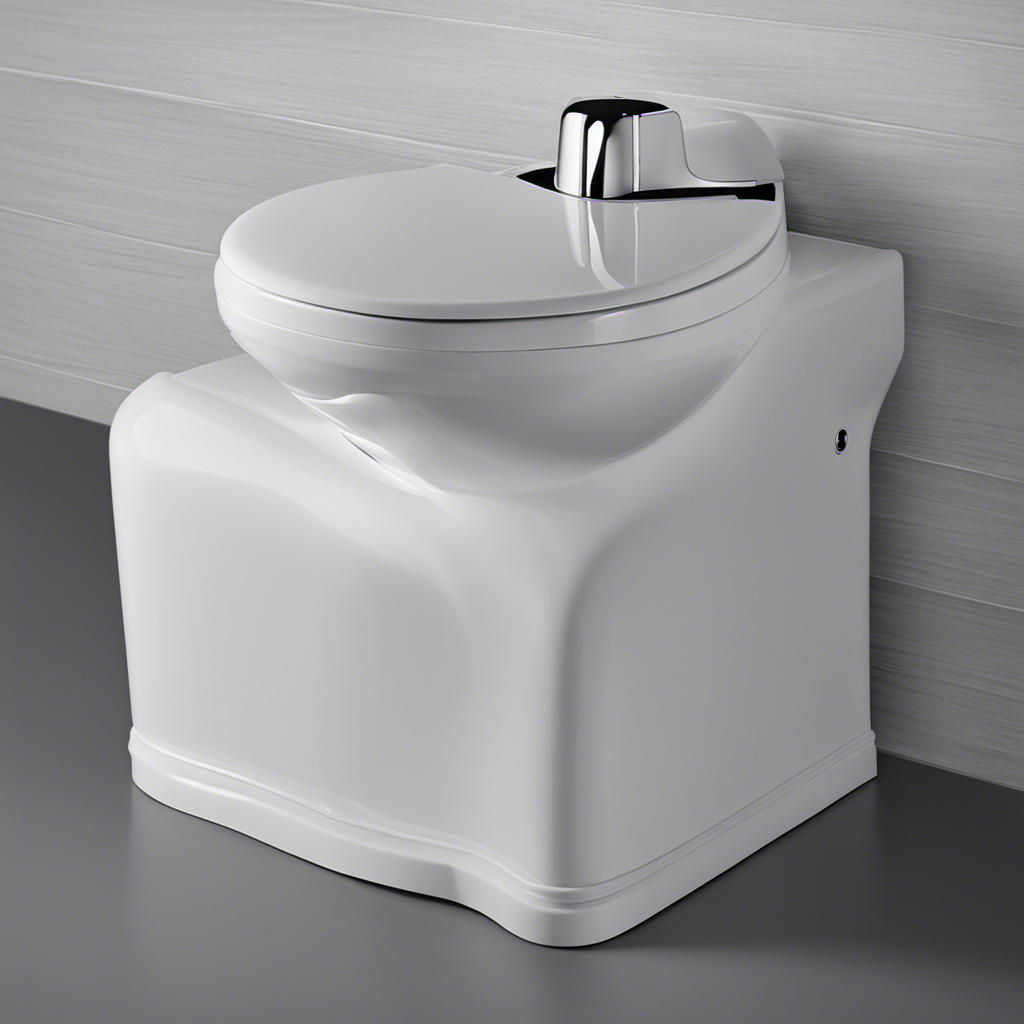I’ve had my fair share of struggles when it comes to removing a toilet seat, but fear not, because I’m here to share my tried and true method with you.
In this guide, I’ll walk you through the step-by-step process of taking off a toilet seat. From gathering the necessary tools to detaching the seat and cleaning it, I’ve got you covered.
So, let’s dive in and get that pesky toilet seat off once and for all!
Key Takeaways
- Measure the dimensions of the current toilet seat before finding a replacement
- Research and consider style, material, and color preferences for the new toilet seat
- Use a screwdriver or wrench to remove the screws or bolts on the underside of the toilet seat
- Clean the toilet seat thoroughly before reattaching it, paying attention to crevices and hinges
Tools Required
To remove the toilet seat, you’ll need a few tools. First, you’ll need a screwdriver, preferably a flathead or Phillips head, depending on the type of screws used to secure the seat. Additionally, having a pair of pliers can be handy for loosening any stubborn bolts or nuts.
When it comes to toilet seat installation, it’s important to consider the types of materials used for the seat. Common materials include plastic, wood, and cushioned seats. Plastic seats are lightweight and easy to clean, while wooden seats provide a more classic look but require regular maintenance. Cushioned seats offer added comfort but can be more difficult to clean.
Having the right tools and understanding the different materials used in toilet seat installation will ensure a successful removal process.
Preparing for Removal
Before you start, make sure you have all the necessary tools for removing the toilet seat. This includes a screwdriver, pliers, and possibly a wrench depending on the type of seat you have.
Now let’s talk about preparing for the removal process. First, measure the dimensions of your current toilet seat. This will ensure that you find the right replacement seat that fits perfectly.
Next, research and find replacement toilet seats that match your preferences in terms of style, material, and color. It’s important to find a seat that not only fits your toilet but also complements your bathroom decor. Look for seats that are easy to clean and durable. Consider reading customer reviews to ensure you choose a high-quality seat.
Removing the Screws or Bolts
Now that you have all the necessary tools, it’s time to remove the screws or bolts holding the toilet seat in place. This step is crucial in order to successfully replace or repair your toilet seat. There are a few common issues you may encounter when removing the screws or bolts, but don’t worry, I’ve got you covered.
One alternative method to consider is using a penetrating oil, such as WD-40, to loosen any rust or corrosion that may have built up on the screws or bolts. This can make them easier to unscrew. Another common issue is stripped screws or bolts, which can be frustrating. In this case, you may need to use pliers or a wrench to grip the screw or bolt and carefully turn it counterclockwise.
Here is a helpful table to guide you through the process of removing the screws or bolts:
| Step | Instructions |
|---|---|
| 1 | Locate the screws or bolts on the underside of the toilet seat. |
| 2 | Use a screwdriver or wrench to turn the screws or bolts counterclockwise. |
| 3 | If the screws or bolts are stuck, try using a penetrating oil to loosen them. |
| 4 | Once the screws or bolts are loose, continue turning them until they are completely removed. |
| 5 | Lift the toilet seat off the toilet bowl and set it aside. |
Detaching the Seat From the Toilet
Once you’ve successfully removed the screws or bolts, you can detach the seat from the toilet by carefully lifting it away from the bowl. This may require a bit of strength and finesse, as the seat can be quite heavy.
Here are some alternative methods and common mistakes to keep in mind:
-
Alternative methods:
-
Use a screwdriver or wrench to unscrew any additional fasteners holding the seat in place.
-
Apply WD-40 or a similar lubricant to loosen any stubborn bolts.
-
Use a hacksaw to cut through rusted or corroded bolts.
-
Common mistakes:
-
Applying too much force when lifting the seat, which can damage the toilet bowl or injure yourself.
-
Forgetting to turn off the water supply before starting the removal process, leading to potential leaks or water damage.
-
Neglecting to wear gloves or protective eyewear, which can result in injury.
Cleaning and Reattaching the Seat
To clean and reattach the seat, make sure to thoroughly wipe down the surface and securely fasten it back onto the bowl.
Proper hygiene practices for toilet seat maintenance are crucial to ensure a clean and healthy bathroom environment. After removing the seat, use a mild detergent or antibacterial cleaner to wipe down the surface, paying close attention to any crevices or hinges. Rinse it thoroughly with water and dry it completely before reattaching.
When reattaching the seat, make sure the attachment mechanisms are aligned properly with the holes on the toilet bowl. Tighten the screws or bolts securely to prevent any wobbling or movement. If you encounter any issues with the attachment mechanisms, such as loose screws or broken hinges, troubleshoot by tightening or replacing the necessary parts.
Regular cleaning and maintenance will not only keep your toilet seat in good condition but also promote proper hygiene in your bathroom.
Frequently Asked Questions
How Do I Determine if My Toilet Seat Is Compatible With the Removal Process Mentioned in the Article?
To determine if my toilet seat is compatible with the removal process mentioned, I need to check the dimensions and material of the seat. This will ensure a successful and hassle-free removal.
Can I Reuse the Same Screws or Bolts When Reattaching the Seat, or Do I Need to Purchase New Ones?
Yes, you can reuse the same screws or bolts when reattaching the toilet seat. However, purchasing new ones has its benefits, like ensuring a secure fit and preventing potential issues in the future.
Are There Any Safety Precautions I Should Take Before Attempting to Remove the Toilet Seat?
Before attempting toilet seat removal, it’s important to take necessary safety precautions. Ensure the toilet is off and the area is well-lit. Use gloves and eye protection. Follow instructions carefully to avoid any accidents.
Is It Necessary to Turn off the Water Supply to the Toilet Before Removing the Seat?
No, it is not necessary to turn off the water supply before removing the toilet seat. However, it is a good idea to wear gloves and you can use a wrench to help loosen the bolts.
What Should I Do if the Screws or Bolts Are Too Tight and I Am Unable to Remove Them?
When faced with tight screws or bolts while removing a toilet seat, I’ve found that using a lubricant like WD-40 can help loosen them. Avoid using excessive force, as it may damage the seat or the toilet.
Conclusion
Removing a toilet seat may seem like a small task, but it can make a big difference in the overall cleanliness and appearance of your bathroom. By following the steps outlined in this article, you can easily take off and clean your toilet seat.
Remember, just like a butterfly breaking free from its cocoon, removing the toilet seat will reveal a fresh and rejuvenated bathroom. So don’t hesitate to take action and give your bathroom the transformation it deserves.










